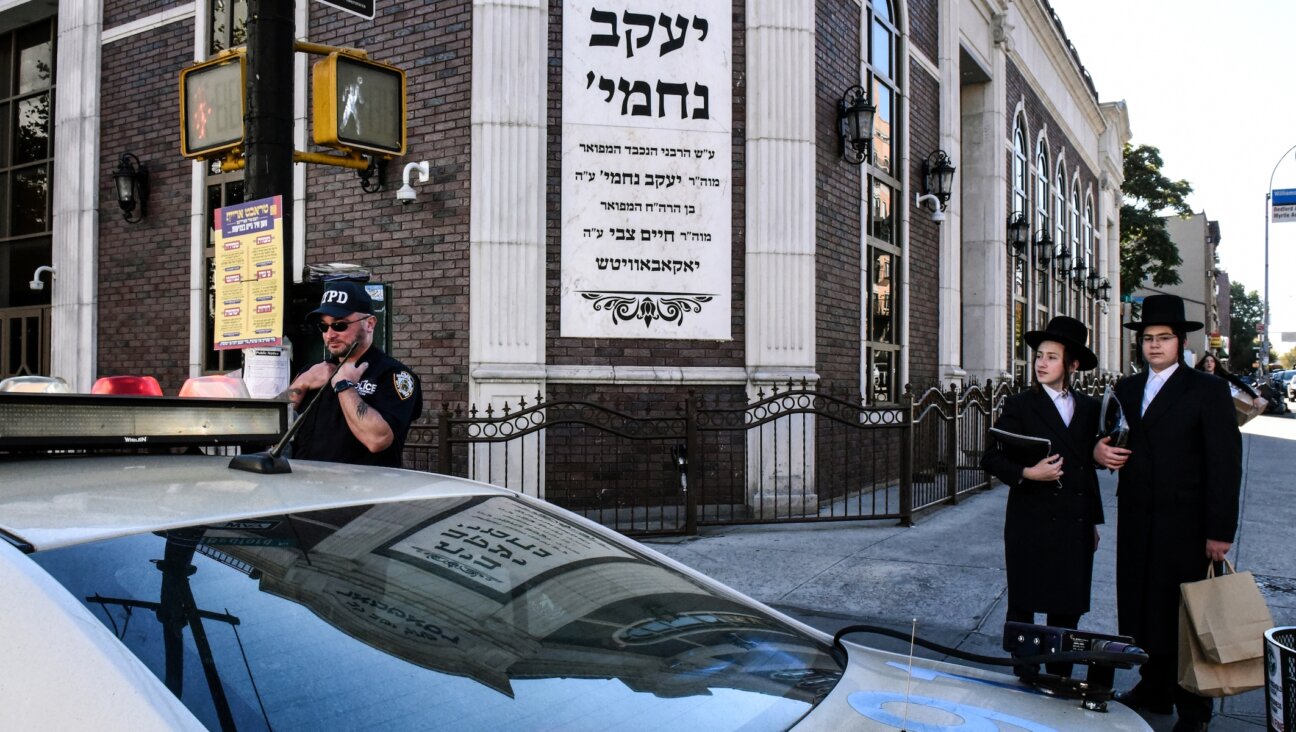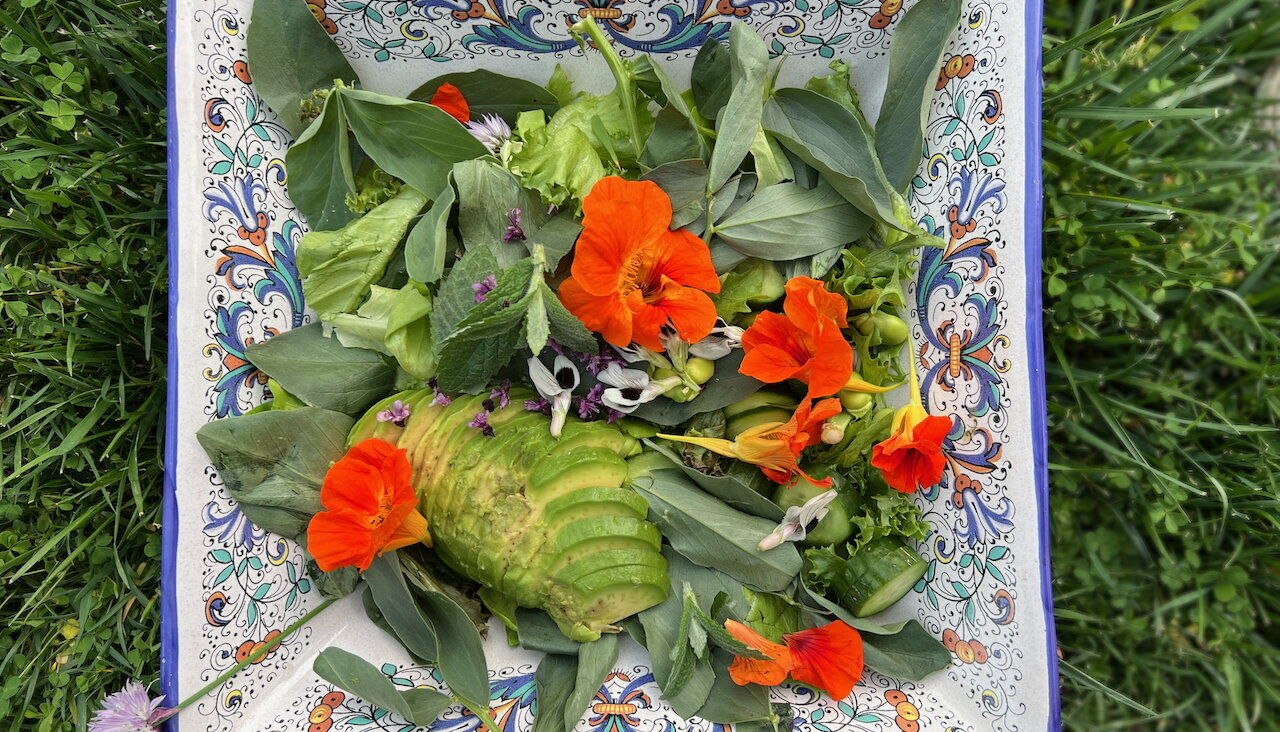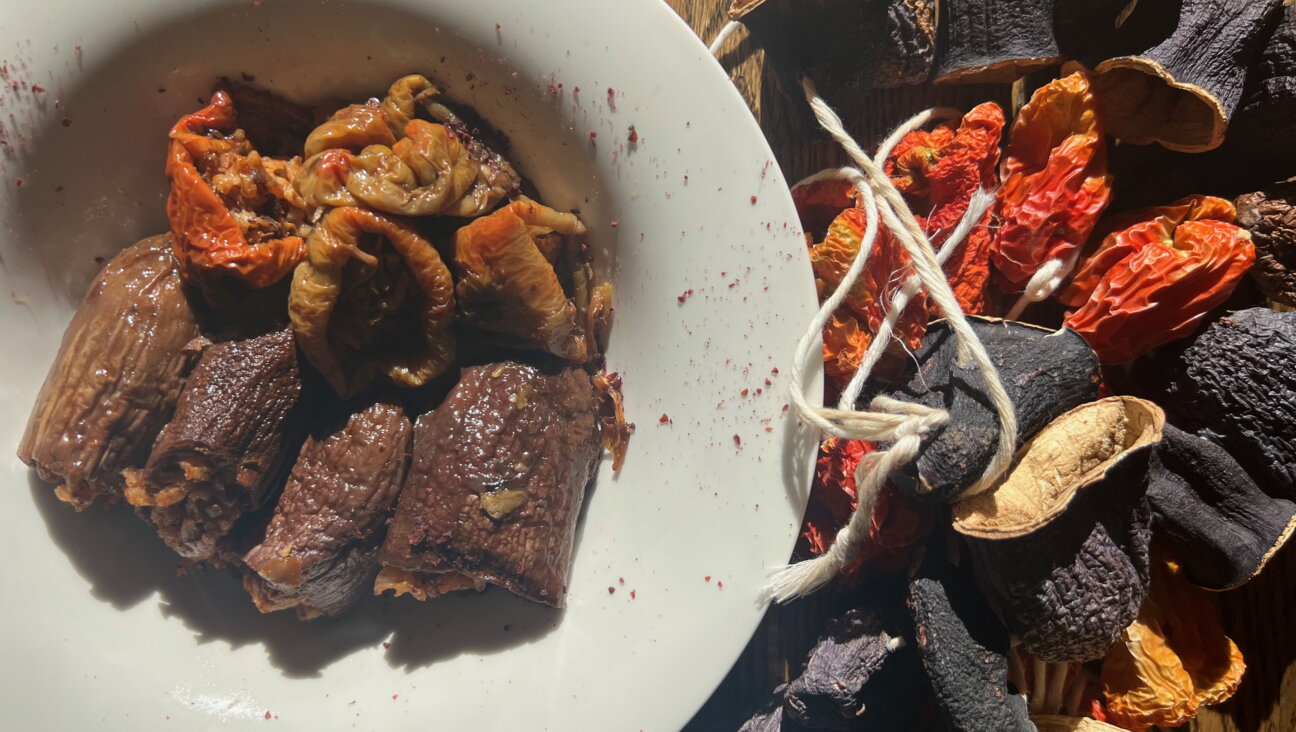The History of the Latke-Hamentash Debate – Alive And Well Since 1946

Image by Befunky/Shira Feder, iStock
For 72 years running, some of the country’s foremost scholars have gathered in one of the University of Chicago’s most Gothic halls to debate one of the most challenging questions of our time: what is superior, latkes, the Hanukkah fried potato special, or hamentashen, the triangular Purim pastries?
To paraphrase 2018 debate moderator Joshua Feigelson, who serves as Dean of the Divinity School when he isn’t attempting to moderate the bloodiest of debates, the night is about the ‘latte-sipping, Subaru-driving, avocado toast-eating hamantashen partisan’ on the one side versus the ‘pickup driver who gets coffee at the local Denny’s and loves his latkes’ on the other – and the concerning polarization of the two.

Image by Screenshot
Since 1946, this competition has been strictly governed. All participants must hold a Ph.D or equivalent high degree, there must be a woman amongst the speakers, and all arguments must “be framed according to the theoretical position and jargon of the participant’s academic discipline; and each symposium must include someone who is not Jewish—to lend a note of ‘gentility,’” as reported by Ruth Fredman Cernea, of the “Great Latke Hamentash Debate.”
Prior attendees included philosopher Allan Bloom (a choice quote from his presentation: “What is bad is not that the economists say that man can live on latkes or hamentashen alone, but that they are vulgar materialists, not understanding the unique Jewish blending of matter and spirit in them which defies economists’ categories”), Professor Wendy Doniger, who argued that hamentaschen are a womb equivalent in “The Archetypal Hamentasch: A Feminist Mythology,” as well as astrophysicist Edward Kolb, who nobly argued for more scientific attention to be paid to the quark structure of latkes versus hamantashen, “at the modest cost of 8.264 billion dollars.”

Philosopher Ben Callard, deep in thought. Image by Screenshot
The idea was born in 1946, when Rabbi Maurice Pekarsky, director of the U of C Hillel, along with historian Louis Gottschalk and anthropologist Sol Tax, decided to do something as a morale-booster for Jewish students, who were uncomfortable with the onslaught of Christmas celebrations on campus, and concerned about where the intersection between Jewish tradition and secular academia lay. And so the great latke-hamentash debate was born, and hundreds of people still attend yearly.
This year, the room collectively booed at the mention of putting ketchup on latkes. This year philosopher Ben Callard did his best to debate the metaphysics of latkes versus hamantashen, wondering “Are hats bags for your head? Are hamantashen bags? Are they simulations of holes?” You get the idea. Dr. Leslie Kay presented ‘Latkes Versus Hamantashen: An Evidence Based Approach.’ And fiscal policy expert Paula Worthington gave a talk too complex for our pages.
And an in accordance with the ‘two Jews, three opinions’ tradition, the final outcome left many drifting out of Mandel Hall, kvetching and hungry.
Happy holidays!
Shira Feder is a writer. She’s at [email protected] and @shirafeder
The Forward is free to read, but it isn’t free to produce

I hope you appreciated this article. Before you go, I’d like to ask you to please support the Forward.
Now more than ever, American Jews need independent news they can trust, with reporting driven by truth, not ideology. We serve you, not any ideological agenda.
At a time when other newsrooms are closing or cutting back, the Forward has removed its paywall and invested additional resources to report on the ground from Israel and around the U.S. on the impact of the war, rising antisemitism and polarized discourse.
This is a great time to support independent Jewish journalism you rely on. Make a gift today!
— Rachel Fishman Feddersen, Publisher and CEO
Support our mission to tell the Jewish story fully and fairly.
Most Popular
- 1

Fast Forward Ye debuts ‘Heil Hitler’ music video that includes a sample of a Hitler speech
- 2

Opinion It looks like Israel totally underestimated Trump
- 3

Culture Cardinals are Catholic, not Jewish — so why do they all wear yarmulkes?
- 4

Fast Forward Student suspended for ‘F— the Jews’ video defends himself on antisemitic podcast
In Case You Missed It
-

Culture Should Diaspora Jews be buried in Israel? A rabbi responds
-

Fast Forward In first Sunday address, Pope Leo XIV calls for ceasefire in Gaza, release of hostages
-

Fast Forward Huckabee denies rift between Netanyahu and Trump as US actions in Middle East appear to leave out Israel
-

Fast Forward Federal security grants to synagogues are resuming after two-month Trump freeze
-
Shop the Forward Store
100% of profits support our journalism
Republish This Story
Please read before republishing
We’re happy to make this story available to republish for free, unless it originated with JTA, Haaretz or another publication (as indicated on the article) and as long as you follow our guidelines.
You must comply with the following:
- Credit the Forward
- Retain our pixel
- Preserve our canonical link in Google search
- Add a noindex tag in Google search
See our full guidelines for more information, and this guide for detail about canonical URLs.
To republish, copy the HTML by clicking on the yellow button to the right; it includes our tracking pixel, all paragraph styles and hyperlinks, the author byline and credit to the Forward. It does not include images; to avoid copyright violations, you must add them manually, following our guidelines. Please email us at [email protected], subject line “republish,” with any questions or to let us know what stories you’re picking up.















